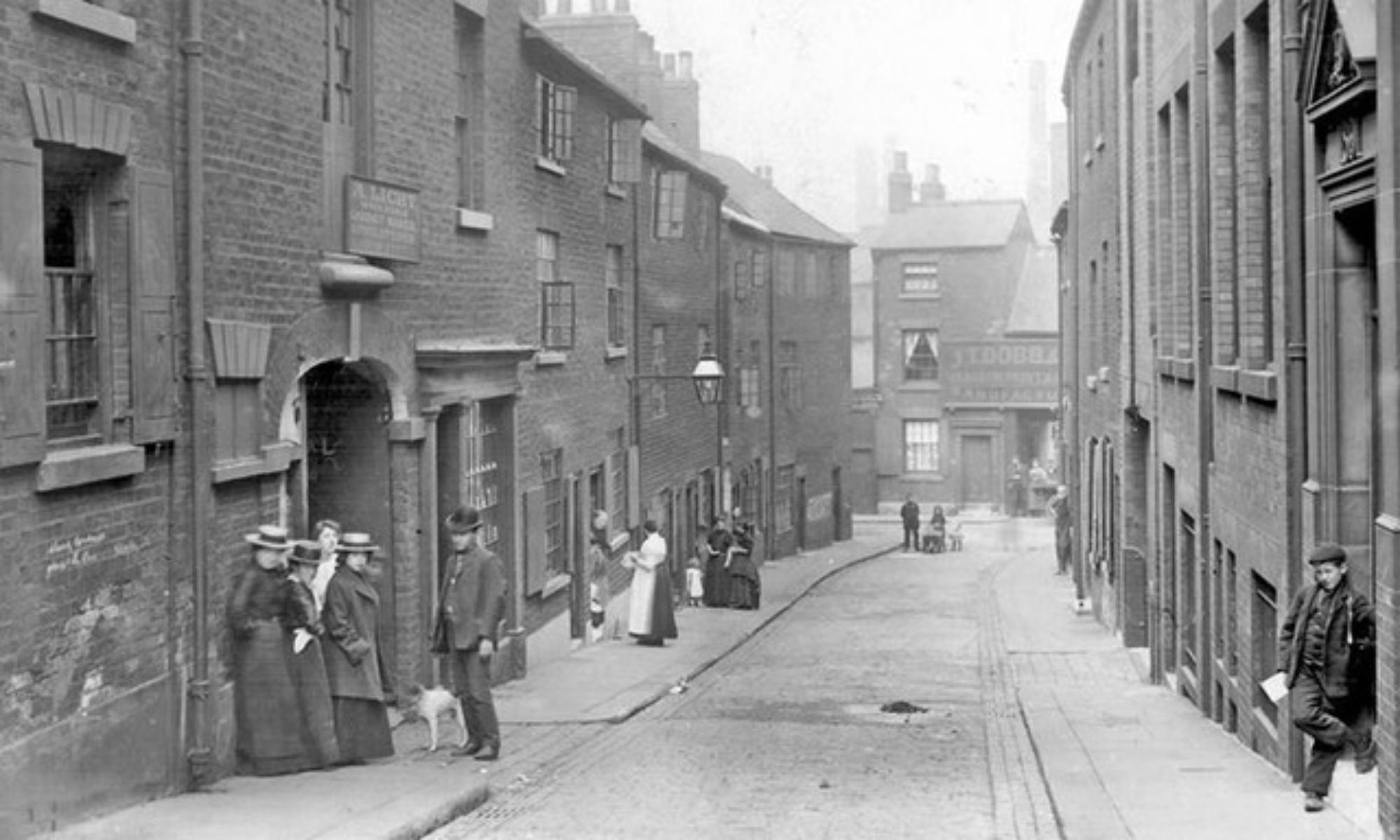EPISODE 175 ‘WOODEN QUILTS” FOLK ART
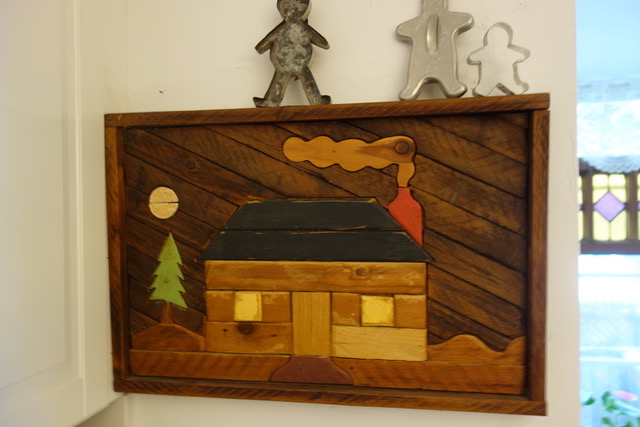


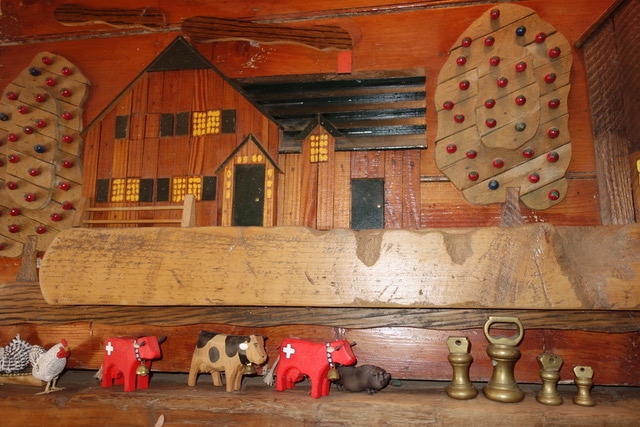

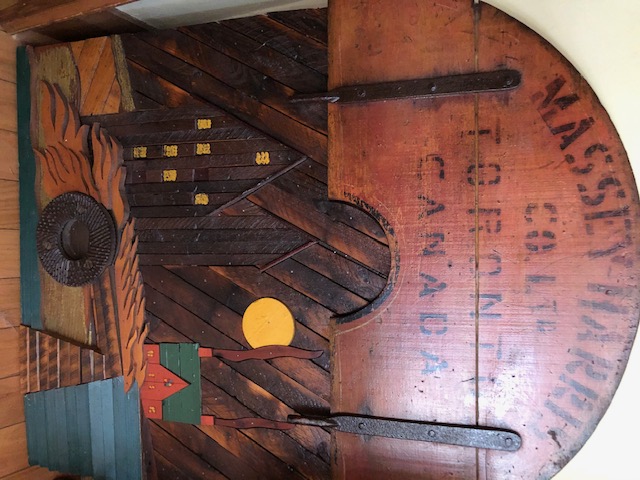
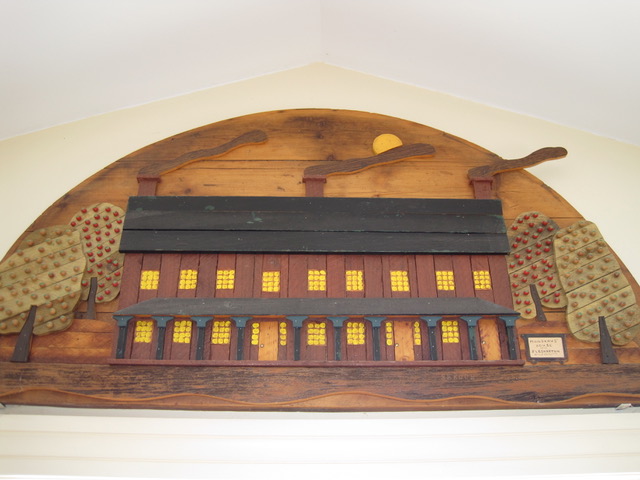



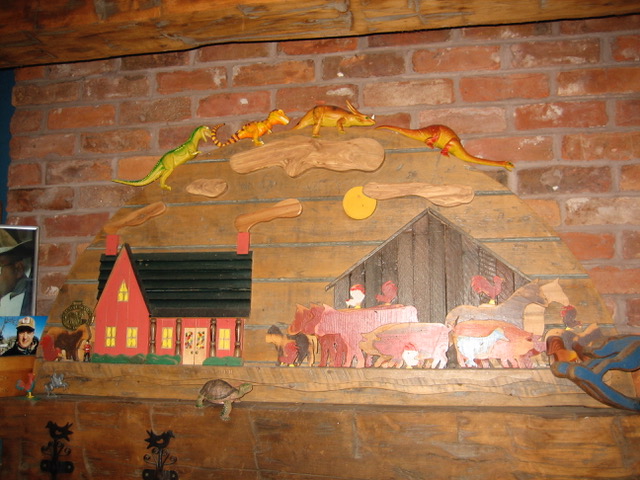

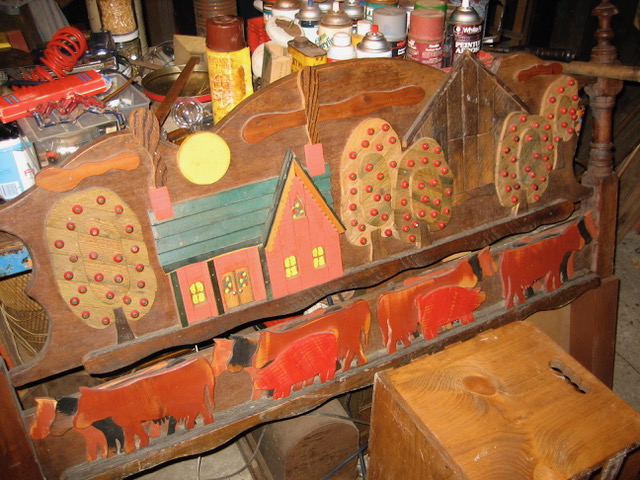
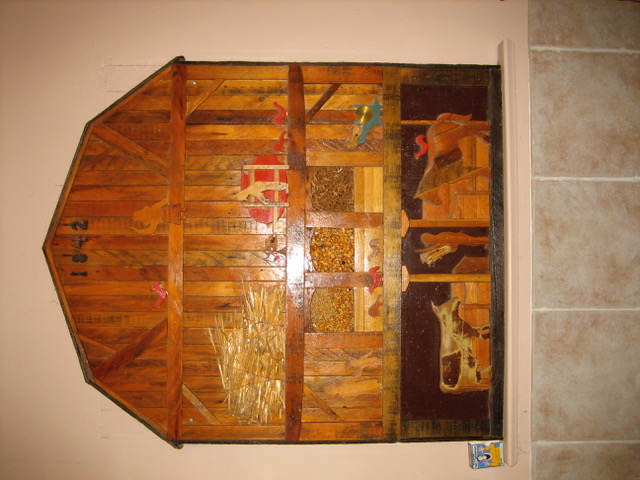
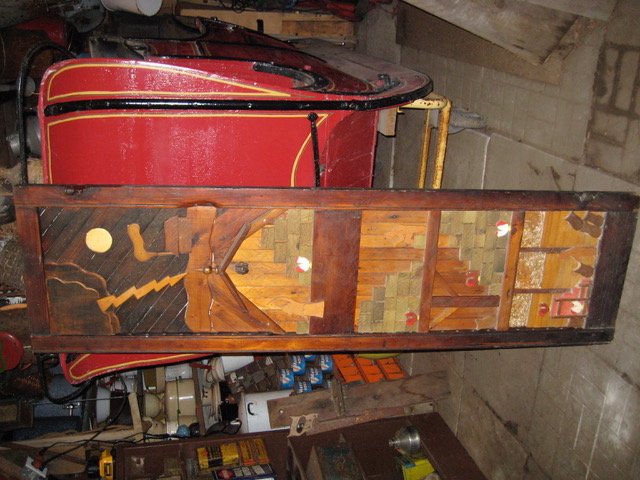
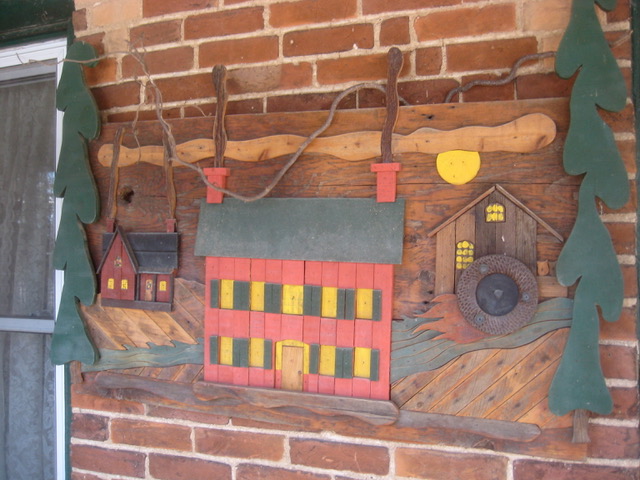


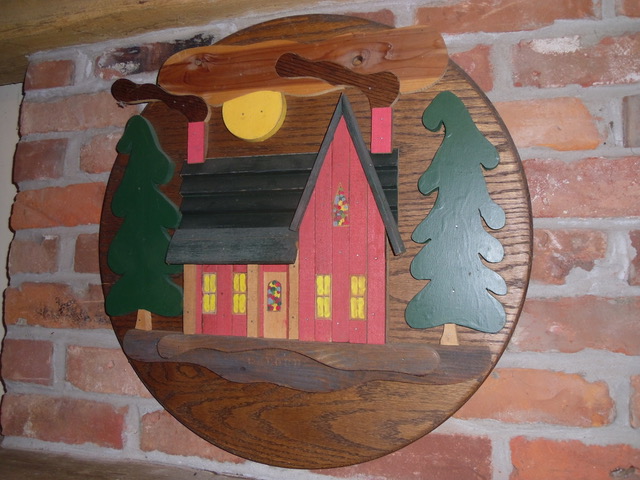 \
\


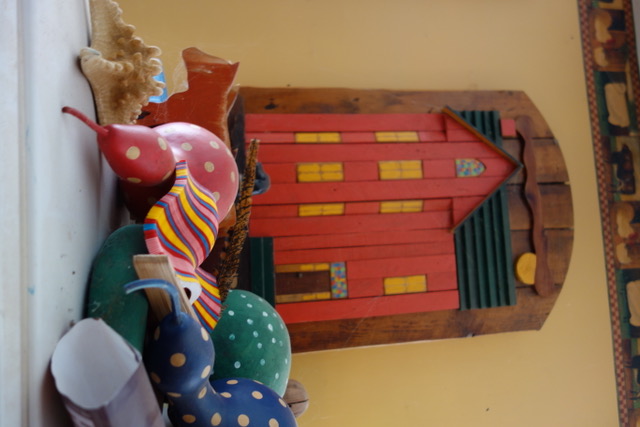

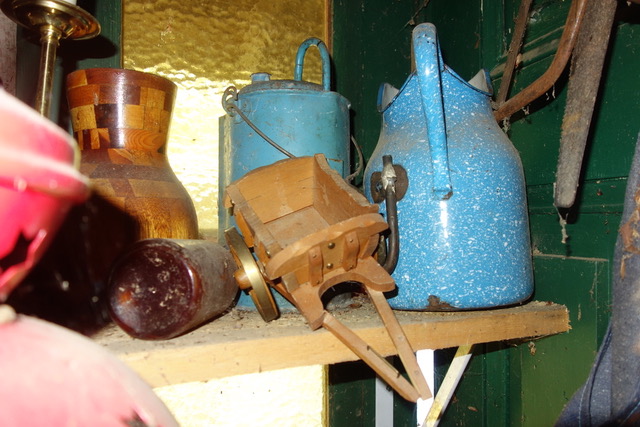
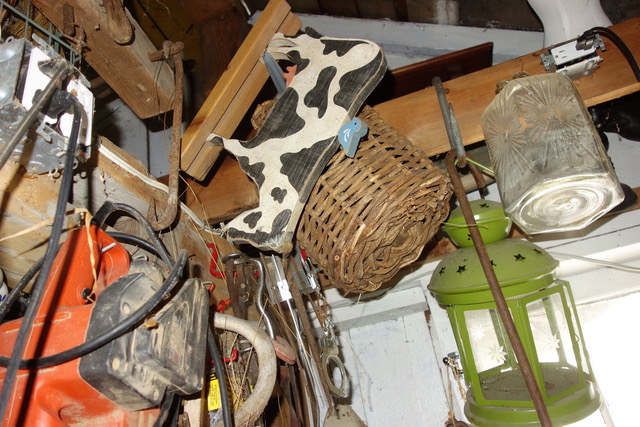
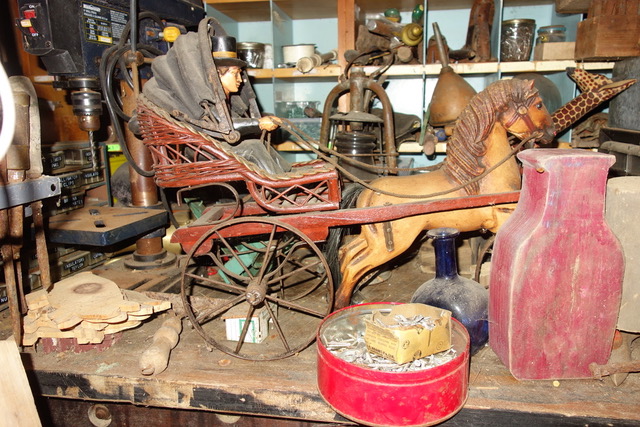
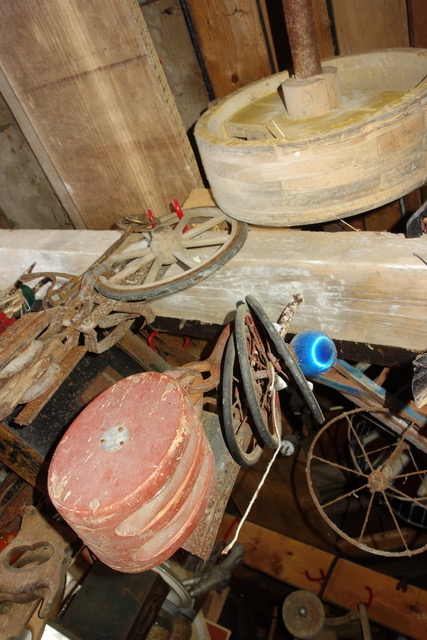
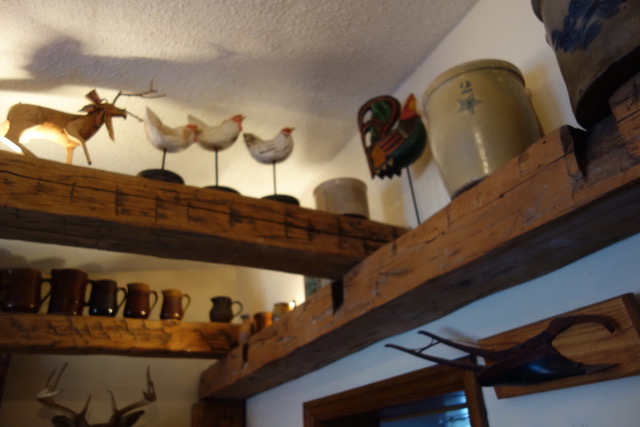

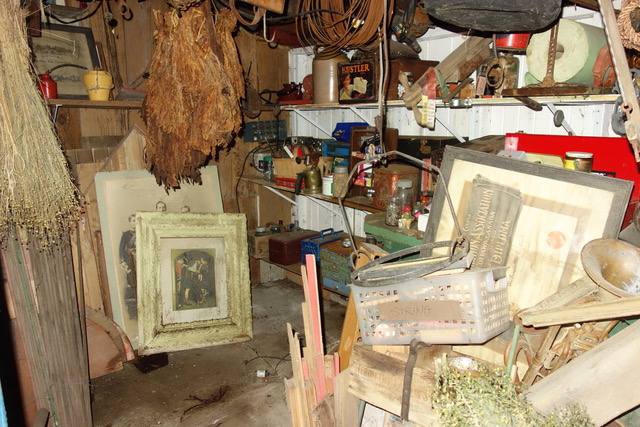
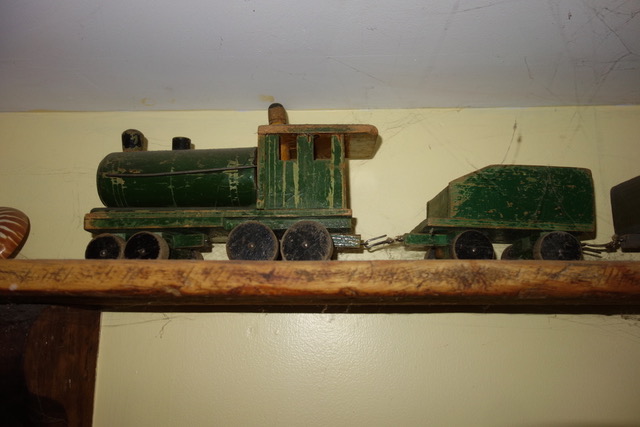
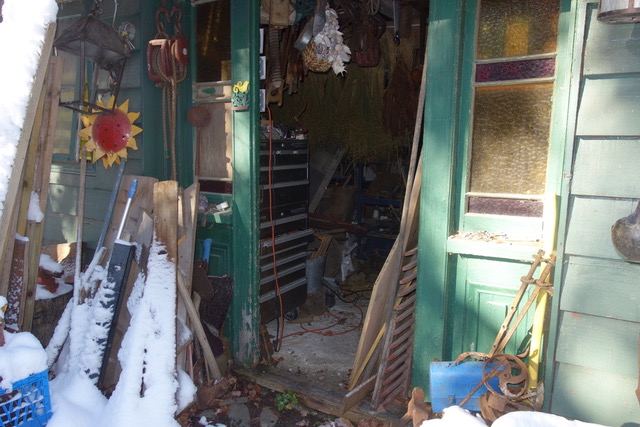
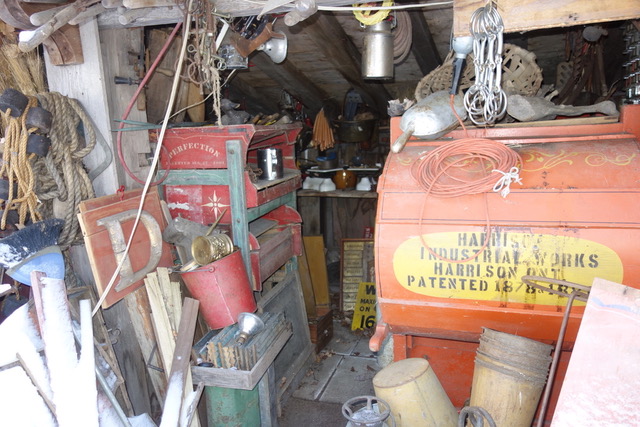
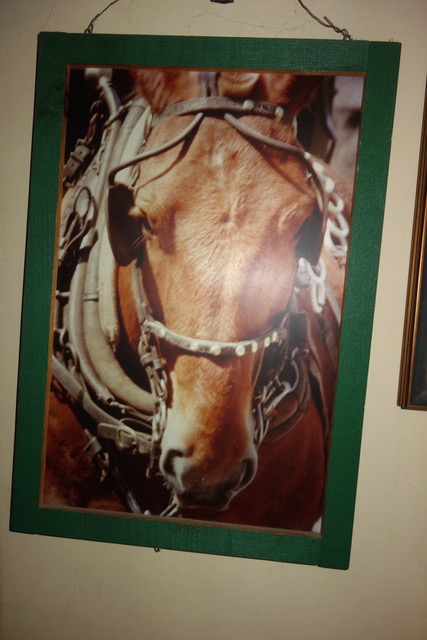
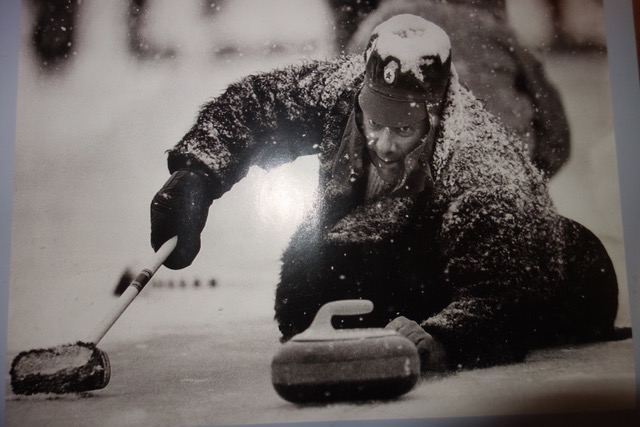

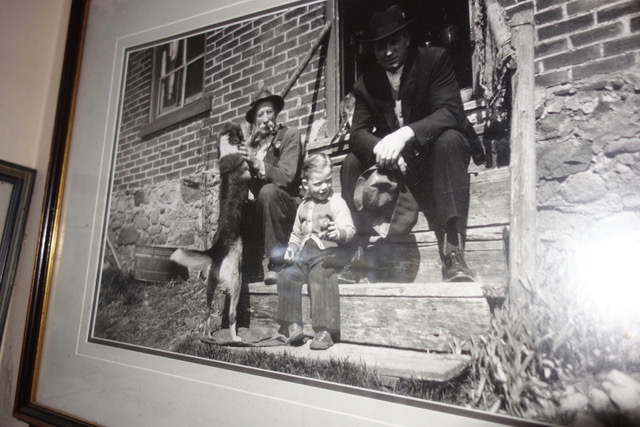
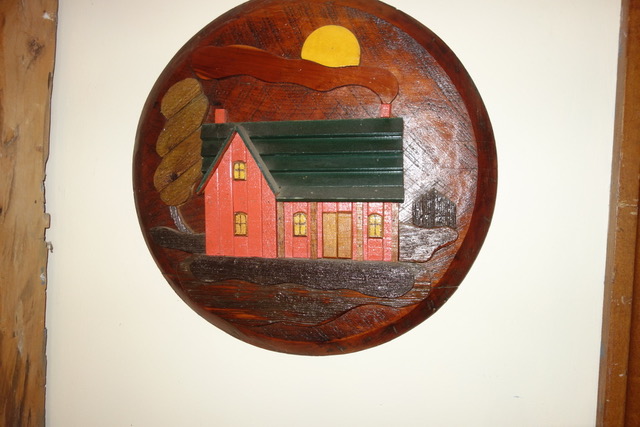


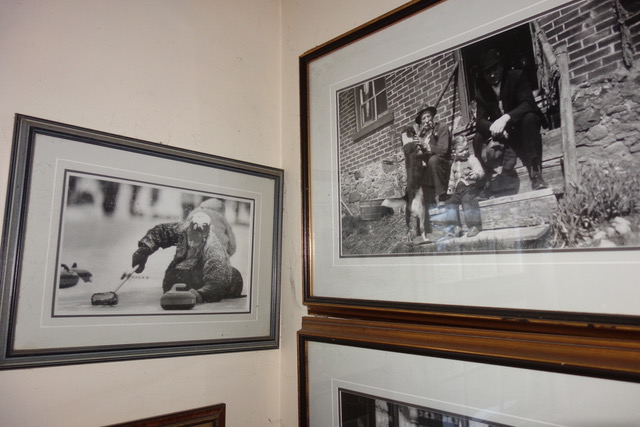
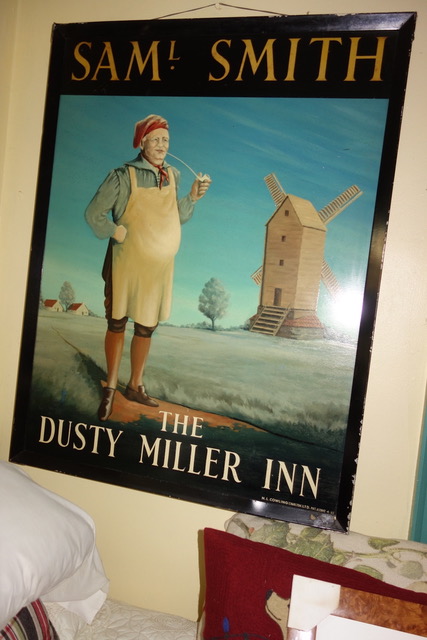

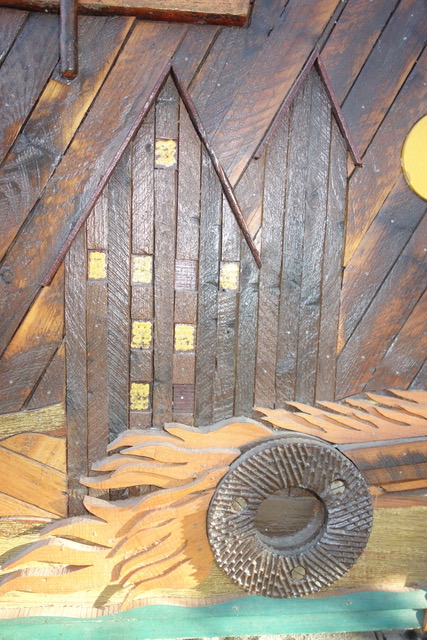

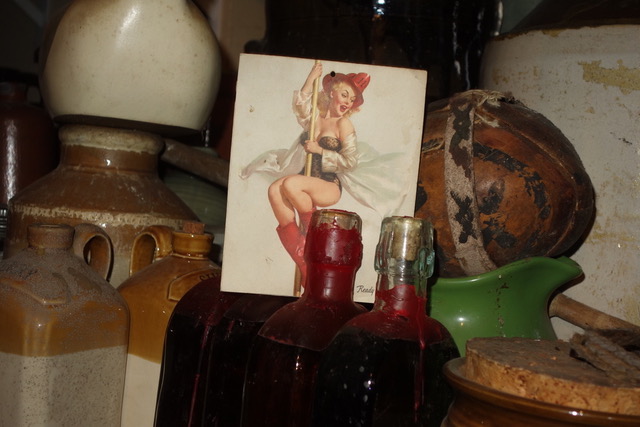





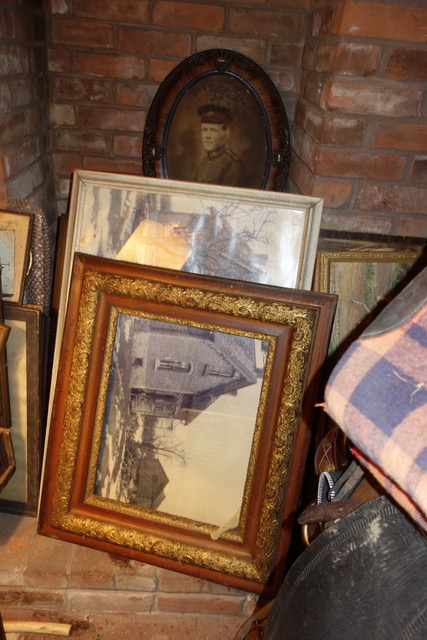
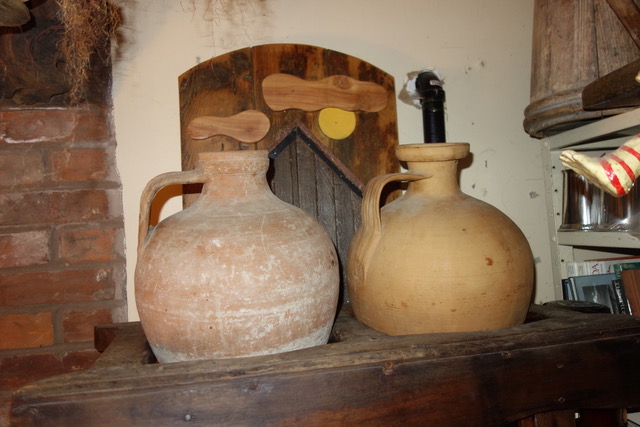
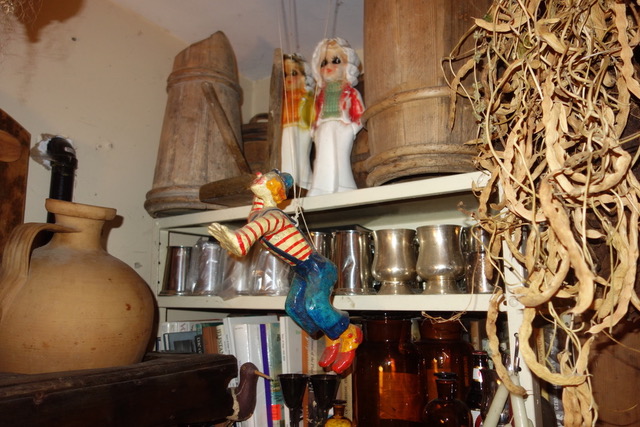

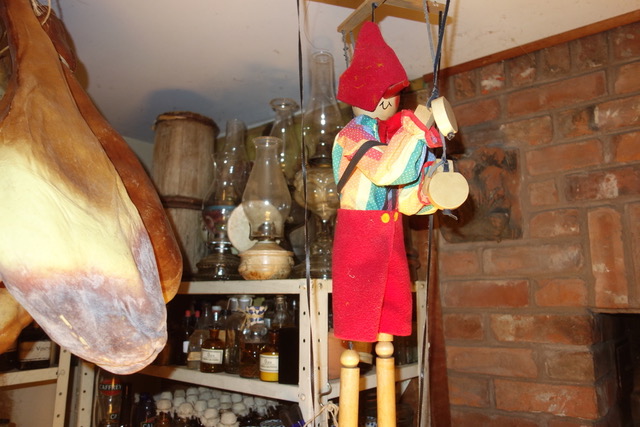
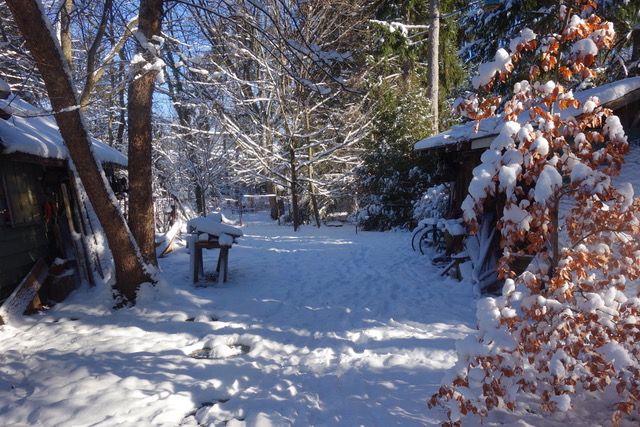
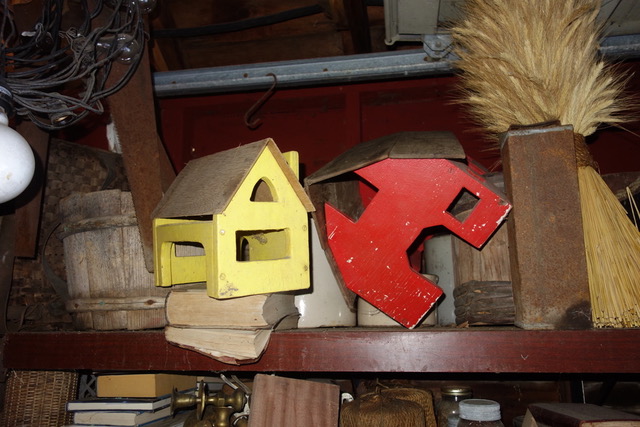

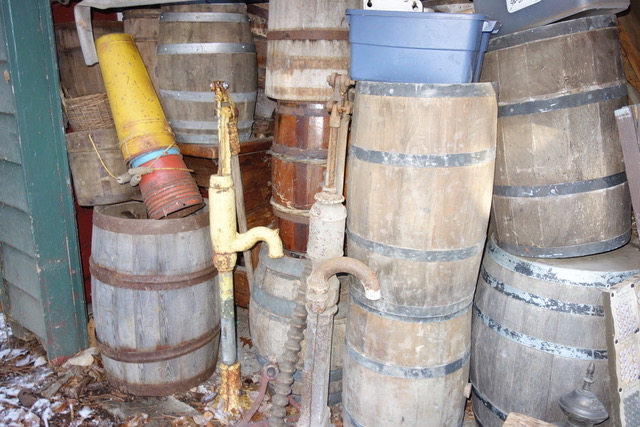
alan skeoch
Dec. 2020
IN THE BEGINNING
IN the beginning of my dabbling into folk art I picked up a piece of weathered snow fence at
the Norman Skeoch farm near Fergus. Wind scoured, rain soaked, man handled … each piece of lath
looked like the sky on stormy days. Or did it look like a plowed field on a winter morning?
Whatever! Those pieces of abused snow fence had a patina and appearance that my mind
saw as metaphors of farm life. Disappearing farm life. Family Farms were as fragile as weathered snow fencing.
Note: This Episode was triggered my Marian Kutarna who sent me a very
flattering request: “Alan, could you describe the motivation behind your folk art creations?”
So here you are Marian.

This log cabin was my first effort at translating old lath pieces into a piece of folk art.
Marjorie liked the effort and that flattery launched me into larger and larger pieces
of folk art.
“What do you call them, Alan?”
“Well, they look a lot like pioneer patchwork Quilts.”
“Wood quilts?”
“Sounds like a suitable name…Let’s call them WOODEN QUILTS
“Let’s gather as much old snow fence as we can.”
“Sometimes rolls of the stuff are auctioned at farm sales.”
“Most times it is simply burned in a field a few days before the auction.”
“How much do we need?”
“Not much. I’ll just make a few pieces of folk art.”
Well, the few pieces multiplied into dozens and dozens. And they got larger and larger.
Initially I made them just for our house and workshop. But people wanted to buy them
so a small art business was launched. Dozens and dozens. All a bit different. But
some kept the rural theme…a red brick rural gothic farm house. Our farm house in
Wellington county. Patterned after the art image titled ‘American Gothic’.
I bought a big band saw and an industrial stationary belt sander. The bandsaw could cut
out the shapes. The sander could polish the pieces. Then I would assemble the pieces
as my mother did when she made our clothes. Patchwork quilts. Mine were made of rescued
wood from Ontario’s disappearing family farms.

Large wooden quilts like the ‘village’ above our fireplace were rather interesting to construct because I made
many of them on slabs of first cut white pine which had been save for a century or so in barns or drivesheds.
Often these slabs were nearly two feet wide so you can imagine how tall those white pines must have been when
the land was cleared for farming. The timbers in Ontario barns tell the same story.
DETAIL OF PICTURE ABOVE FIREPLACE

Elements in this closeup
1) Apple orchard made from wooden beads
2) Base of house made from age old plank chewed by rodents or chickens.
3) Sky from old snow fence
4) Field made from old barn siding
5) House roof made from farmhouse shutter
6) Smoke made from piece of aromatic cedar from chest
7) Apple trees made from lath spacers used in lumber aging
8) porch supports and decorative roof edging made from old picture frame
9) Large backer board was top of large pioneer chest or perhaps a slab
door to granary.

The large home in this picture was made from cast off lath used on our farm
house walls before the wet plaster was applied around 1870. Really old lath
was made of fine pine, knot free. Later lath was thinner and less interesting.
Piles of old lath appeared occasionally where farm houses were being wrecked or
renovated. It was free for the taking usually

TRADE SECRET: HUSH…DO NOT TELL ANYONE!
My apple orchards were made from the little wooden balls that used to be strung
together for Christmas garlands. No need to paint them. If you look closely
you will see three kinds of apples…red, green, white were good…purple had
to be painted as there are no purple apples.
OLD MILLS….GRIST, LUMBER, FLOUR MILLS WERE ONCE COMMON ON ONTARIO RIVERS

BLACK CREEK GRIST MILL
Just barely visible in the light of the moon is the towering old Black Creek
grist mill in full operation with the mill pond water rushing through the flume
to drive the giant overshot mill wheel providing more than enough power
to grind North Toronto Grain in the late 19th century.
SOURCE OF PARTS
1) Old shutter provides the mill pond
2) Elm shingles found in Ohio are carved to simulate moving water
3) The Iron Mill wheel comes from a farm corn grinder
4) The dark sky is lath from Norman Skeoch’s snow fence
5) The Massey Harris curved top board was once protective
shield on a corn cutter that made ensilage as cattle fodder.
6) The moon is a hardwood disc cut from a roller from an
old grain binder.
7) The red house was inspired by the Freeman farm house of
which there were once hundreds built on the same model with
plans purchased from the Timothy Eaton catalogue.
OTHER WOOD QUILTS

I made this piece for my brother and sister in law. The old hotel still exists
in the village of Flesherton.

I made a larger version of this one for the MacMorrin family in memory of their grandfather
who was the Anglican minister of the church in the village of Wales on the St. Lawrence
Seaway. The village now lies beneath the rushing waters. Church and Manse.
Below are copies of paintings done by Kierstead who had similar motivation to mine
only he used oil paints to capture the disappearing rural architecture of Ontario
MISSISSAUGA LIBRARY SYTEM
Three of my wooden quilts were bought by the Mississauga Library System. Two were
very large. One hangs in the South Common Mall library, now protected by a sheet of solid plastic
because children loved to pick the fake maple leaves. Another hangs in the Frank McKechnie Library featuring
the rural landscape that once existed there. The other, a small one, represented the first Port Credit library…
a small cottage like building in faded yellow. That wood picture disappeared when the new
library was built a few years ago. Maybe Marian Kutarna can find it.
Two people who influenced me must be mentioned. Don Mills, the top man at the Mississauga
Library and Aileen Whortley whose enthusiasm led me beyond the Wooden Quilts to the
writing of a history of Mississauga titled ‘Where the River Speaks’, a book now out of print
and offered at high cost through eBay and others.
HERE ARE A BUNCH OF OTHER WOOD QUILTS


I Made quite a bunch of these engines. Why? Because I had all these sprocketed gears taken from old farm machines. The engines made
no operational sense which was why so many people wanted them for their children’s bed rooms. Imagination is something to be encouraged.







Barn interiors were also very popular. We did quite a number of art shows across Ontario. I remember one show
done in the Distillery District of Toronto where I asked
“Do you have any rats or mice?”
“None whatsoever. was the answer
Well that turned out to be a lie. The real grain in my imaginative granaries
was gobbled up in one night.

 \
\


Not everybody likes these interpretations. How do I know that.
? Because I made a large quilt from lumber where cattle had taken their last
long walk at the Toronto Stock yards. I liked it but felt the general manager of the yards should have it. A year later
I noticed it hanging in the window of a North Toronto antique shop. I should have bought it back.
I really do not give a sweet goddamn whether you like or hate these creations. What matters most is that I liked doing them. Most
artists must feel that way. Today we have moved on. The movie industry likes our things some movies even rented some of
our wooden quilts. Why? Because art directors have imagination.
MY WORKSHOP…WITH PIECES GLEANED FROM RURAL FARM SALES WITH ‘VISIONS OF SUGAR PLUMS DANCING IN MY HEAD’

With the money from my first sale I bought this wonderful band saw which allowed me
to cut shapes into cows, horses, chickens, ducks, people, fanning mills, steam engines.














MOTIVATION
A lot of the motivation came from three sources. First, there was Marjorie who like the creations and refused to sell some of them
Second, from my mother who was a seamstress who made our clothes out of scraps and old coats … when we were kids.
Third, from my grandparents whose farm provide all the imagination I would ever need in life.























alan skeoch
Dec. 2020
